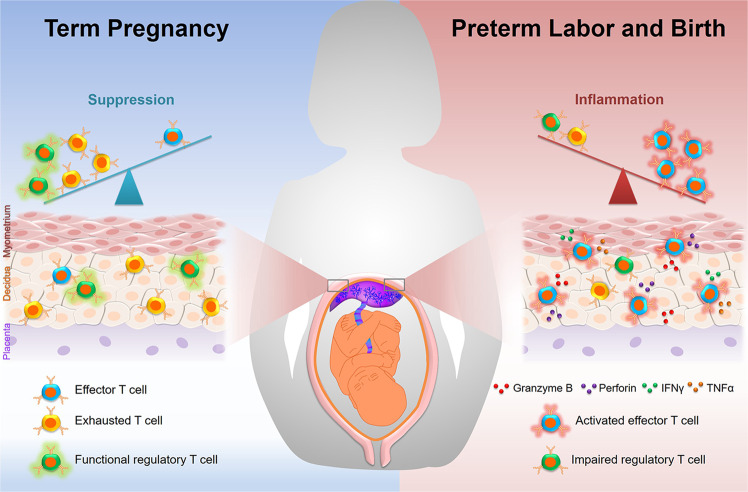Fig. 1.
Maternal T cells at the maternal–fetal interface in term pregnancy and preterm labor/birth. (Left panel) During normal pregnancy, a suppressive microenvironment exists at the maternal–fetal interface to prevent aberrant maternal immune responses against foreign antigens. This suppressive microenvironment is mainly driven by regulatory T cells and exhausted T cells. (Right panel) Preterm labor is accompanied by inflammation at the maternal–fetal interface, which can be driven or exacerbated by the invasion of activated effector T cells that release pro-inflammatory mediators such as perforin and granzyme B. Moreover, local inflammation may lead to the reactivation of exhausted T cells, restoring effector functions such as the release of pro-inflammatory cytokines and thereby further propagating T-cell responses

